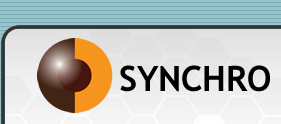|
Systems Integration , two words that will strike fear into the heart of any technologically suspicious, consultant wary, foundry man (or should that be foundry person); but is there a good case to be made for systems integration and what does it mean?
Many small, and even medium size foundries still rely upon their separate departments doing the jobs they need to, in a singular and efficient manner, and it has to be said, usually making a good job of it. So why interfere? On the surface this argument seems reasonable enough, and if you accept that successful departments make a successful company then why change anything? The answer is pretty straightforward, individual departments do what's good for them and not necessarily what's good for the company as a whole. A prime example of this is the collection of data (as distinct from information). A department (in whatever form it may take) will happily collect and process data turning it into useful information; but it will generally only do this if the information it produces is attributed specifically to it, and credited accordingly; a very human trait as I'm sure you will agree. This is interesting, and some may say not particularly useful, or is it? Does this insight give us a way forward, a way to encourage a whole company approach? The answer to this question is the essence of system integration and the reason behind many of the benefits it provides. In this article I will be concentrating on the benefits which integrated software systems provide; this theory works with all forms of integration, be it computer software, manual information, or even management structure.
The premise is simple; in order to ensure departments contribute to the company as a whole they have to receive benefits equal to the effort they believe they are making. The benefit they receive can be in many forms; but it has to be strong enough to battle the general indifference (and reluctance ) to change. As I'm here to discuss integrated foundry software I will limit myself primarily to its application. The main benefits usually fall into two camps, the first through the receipt of clear and unambiguous information leading to better (read easier ) decision making, and the second, making any physical effort less demanding. Key to making this work is ensuring departments successfully associates their existing work and (more specifically) any perceived company work with the additional benefit. Integrated software can make this task significantly more apparent (and thus highlight the benefits more effectively). Collecting data into one place, analysing it, and distributing it from a central point means everyone is singing from the same hymn book. Data duplication (read duplicate effort ) and worse still ‘misunderstandings' (read out of date duplicate effort); can be avoided. In addition, the benefit of housing collective knowledge in one place leads to information and conclusions that would ordinarily have been impossible to reach otherwise. In short, collective contribution benefits everyone; but for it to work at a departmental level they must feel benefit at departmental level.
Implementing an integrated software system is by no means an easy ride, although you can make this task easier by implementing a system specifically designed for your industry. Many foundries have installed generic ERP/MRP systems (usually at the request of ‘group') to find that most the benefits are (not surprisingly) aimed at group level. These benefits are usually reliability of production scheduling, financial reporting and predictability, and concentrate more (for the most part) on the final result than the means of getting there. The plain truth is generic ERP/MRP systems work well at group level but not at foundry level; for many reasons outside the scope of this article. However, integrated ERP/MRP software written specifically for foundries do exist providing all the benefits that group require whilst making sure the foundry can still run smoothly and successfully (here I must declare an interest as the founder of a software company created specifically for this task http://www.synchro32.com ).
Achieving the benefits of integrated foundry software - Part Two
Die Casting Times
April/May 2007
...................................................................
 |
Team Spirit |
Die Casting Times |
Read Article |
November 2008 |
 |
Generic ERP verses Cast Metal Specific ERP |
Foundry Tade Journal |
Read Article |
November 2008 |
 |
How personal is your foundry software? |
Die Casting Times |
Read Article |
September 2008 |
 |
A question of "Home grown or not?" |
Die Casting Times |
Read Article |
July/August 2008 |
 |
Product Innovations |
Modern Casting |
|
December 2007 |
 |
So much information, so little time... |
Die Casting Times |
Read Article |
July/August 2007 |
 |
Achieving the benefits of integrated foundry software - Part One |
Die Casting Times |
Read Article |
April/May 2007 |
 |
Achieving the benefits of integrated foundry software - Part Two |
Die Casting Times |
Read Article |
April/May 2007 |
...................................................................
Back
|

